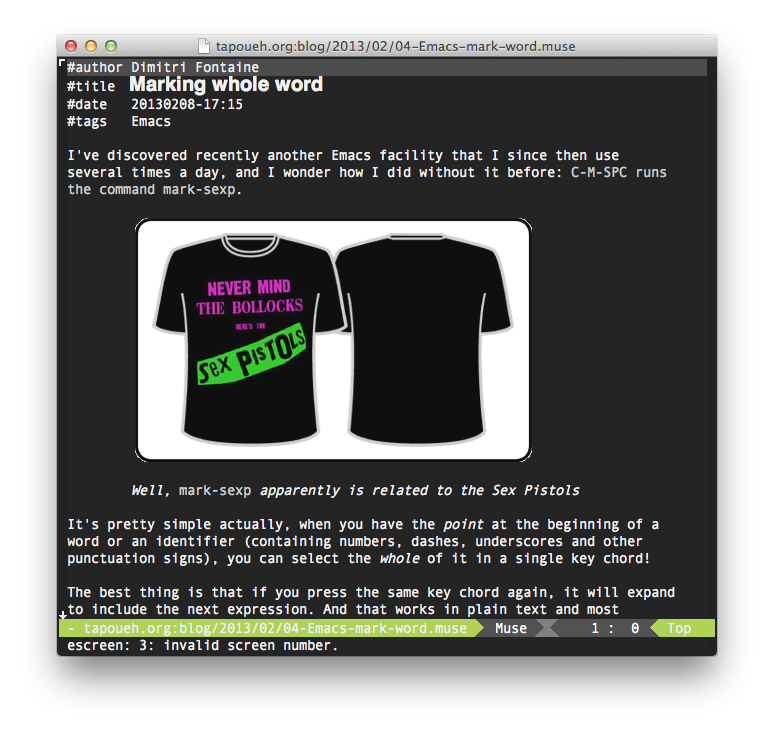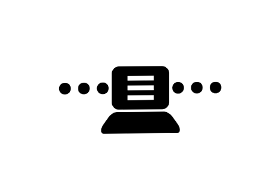
The code of El-Get has been pretty stable for a long time now. About the whole set of patches against the 4.x series has been about bug fixing corner cases (sometimes cases that had nothing cornery about them too) and providing more and more recipes. That’s what you expect from a stable software, and that what allows us to move to a rolling releases model.
In practice, it means that you won’t have to suffer from using a badly maintained stable branch anymore.

This blog of mine is written in the very good Emacs Muse format, that I find much more friendly to writing articles than both org-mode and markdown-mode that I both use in a regular basis too. The main think that I like in Muse that those two others lack is the support for displaying images inline.
*Here's what it looks like to edit with Emacs Muse* The Muse publishing system The idea is that you edit .

Yes it did happen, for real, in London: the Emacs Conference. It was easter week-end. Yet the conference managed to have more than 60 people meet together and spend a full day talking about Emacs. If you weren’t there, a live stream was available and soon enough (wait for about two weeks) the video material will be published, as sacha is working on it.
The conference has been packed with awesome really.

The Emacs Conference is happening, it’s real, and it will take place at the end of this month in London. Check it out, and register at Emacs Conference Event Brite. It’s free and there’s still some availability.
*It's all about Emacs, and it rocks!* We have a great line-up for this conference, which makes me proud to be able to be there. If you’ve ever been paying attention when using Emacs then you’ve already heard those names: Sacha Chua is frequently blogging about how she manages to improve her workflow thanks to Emacs Lisp, John Wiegley is a proficient Emacs contributor maybe best known for his ledger Emacs Mode, then we have Luke Gorrie who hacked up SLIME among other things, we also have Nic Ferrier who is starting a revolution in how to use Emacs Lisp with elnode.

I’ve discovered recently another Emacs facility that I since then use several times a day, and I wonder how I did without it before: C-M-SPC runs the command mark-sexp.
*Well, `mark-sexp` apparently is related to the Sex Pistols* It’s pretty simple actually, when you have the point at the beginning of a word or an identifier (containing numbers, dashes, underscores and other punctuation signs), you can select the whole of it in a single key chord!
